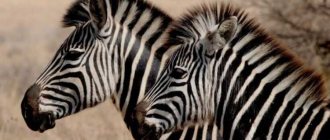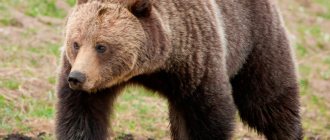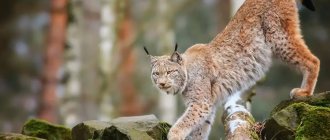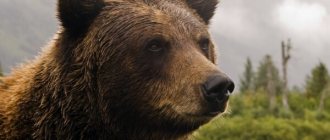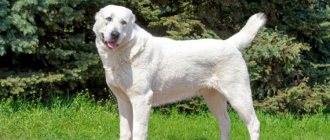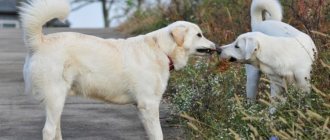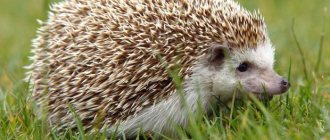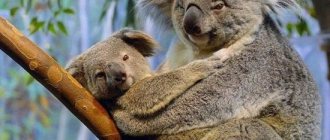If you consider the bear to be a dangerous predator that prefers to feed on mammals, then you will be disappointed. In fact, most of a bear's diet consists of plant-based ingredients. These can be any gifts of nature: berries, plants, roots, etc. And if the animals that live in zoos do not have to get food, then wild animals are forced to spend a lot of time looking for food and eating pasture. Fortunately, the forest provides the clubfoot with everything he needs.
Description of the species
The brown bear, also called the common bear, is a fairly massive animal with a heavy build and belongs to the class of mammals. It is an independent species and includes 20 subspecies.
The animal has a large head with deep-set small eyes and a short tail, completely hidden in the fur. The length of the curved claws reaches 10 cm. Due to the peculiarity of waddling, the bear was popularly dubbed clubfoot.
The brown bear is one of the largest predators inhabiting land.
The dimensions and color of an adult animal vary depending on its habitat. This also determines what the brown bear eats. The largest animals of this species live in the Far East and Alaska. Their height reaches almost 3 meters, and they weigh about 700 kg. And the smallest representatives of the species live in Europe, their height does not exceed 2 meters, and their weight is 400 kg. Moreover, males are larger than females.
The color of representatives from different subspecies varies from pale yellow to black with a blue tint.
The animal's fur is thick and shiny.
Once a year, animals molt, molting occurs from spring to late autumn, so in the summer the clubfoot looks unkempt.
These animals live from 20 to 30 years in natural conditions, but in captivity with proper care they can live up to 50 years.
What happens to a bear's body during hibernation? Expert commentary
Every autumn, bears of temperate and polar latitudes (in particular brown and black) begin to prepare for hibernation.
All spring, summer and autumn, these animals actively fed, fattening up their fat reserves for the winter. And now, when the cold weather sets in, they are looking for suitable shelter to spend the winter. After shelter is found, the bear goes into hibernation. Hibernation of bears in some cases lasts up to six months. During hibernation, some species, such as the black bear (Ursus americanus), reduce their heart rate from 55 beats per minute to about 9. Their metabolic rate decreases by 53%. Naturally, all this time the bears do not eat, drink or produce waste. How do they do this? To understand what happens in a bear’s body during hibernation, it is necessary to immediately clarify what hibernation itself is. And why is this not “anabiosis” in the literal sense of the word? In the literal sense of the term, “anabiosis” is the process of complete inactivity of an animal. At this time, the metabolic rate decreases to levels that are incompatible with life for most higher animals.
Some species of amphibians (some newts and frogs) freeze in cold weather, thawing without harm when the warm season begins. This “freezing” is literally painless for them due to the production of a specific substance that has the properties of antifreeze, which prevents the water in their body from freezing.
Bears don't freeze. Their body temperature remains high enough during hibernation, which allows them to wake up in case of any danger, leaving the den. By the way, bears that woke up ahead of time are called “connecting rods.” They pose a significant danger to humans, since in winter the bear cannot find enough food and is always hungry and aggressive.
Some researchers claim that bears do not go into suspended animation, as mentioned above. But there are also scientists who call bears “super-anabiotics”, since not eating, drinking or defecating for six months, while remaining able to quickly emerge from hibernation, is a unique phenomenon in the animal world.
“In my opinion, bears are the best suspended animals in the world,” says Brian Barnes of the Institute of Arctic Biology at the University of Alaska, Fairbanks. This scientist spent three years studying the hibernation patterns of black bears.
“Their body is a closed system. They can spend the entire winter using only oxygen to breathe, which is all they need,” says Barnes.
Why don't bears defecate during hibernation? In short, it is because a fecal impaction forms in their body at this time. This is a special mass that researchers have long found in the esophagus of hibernating bears.
It was previously believed that before entering a den, bears ate large amounts of plant material, the hair of other bears and other materials that were not digested and which then formed a plug in the animal's intestines. The scientists who came to this conclusion relied heavily on information received from bear hunters. They argued that the method of feeding mentioned above led to “fastening of the intestines” and the animal simply could not perform an act of defecation during sleep.
In fact, this is not true. Bears don't eat anything special before hibernation. They, like omnivores, try to consume any food available to them, including fruits, vegetables, nuts, meat, fish, berries and much more.
And during hibernation, the animal’s intestines continue to work. Not in the same activity mode, but it still works. Cells continue to divide and intestinal secretion occurs. All this forms a small amount of feces, which accumulate in the animal’s intestines. A “plug” with a diameter of 3.8 to 6.4 centimeters is formed.
“A fecal impaction is waste material that sits in an animal’s intestines for so long that the intestinal wall absorbs fluids from the mass, leaving it dry and hard,” the North American Bear Research Center says on its website. Thus, the bear’s body does not lose the water it needs, the reserves of which in the den are almost impossible to replenish.
Experts placed cameras in the bears’ dens that recorded everything that happened during hibernation. As it turned out, plant fibers and wool are often an integral part of cork because a bear, even during hibernation, can pick up something from the ground in the den, and can even lick its fur.
After the bear leaves the den, they clean out the intestines, which begin to function normally. Usually defecation occurs already at the threshold of the den. Therefore, there is no mysticism or mystery, as some hunters or even scientists say, in a bear jam. All this is a product of the body’s vital activity. By the way, the bear in the den does not suck its paw at all. The fact is that in January and February the skin on the paw pads changes. The old skin bursts and itches, which causes the bear certain discomfort. To relieve the itching, the bear licks its paws.
In order to clarify the details of the hibernation process in bears, I requested comments from scientists from Krivoy Rog State Pedagogical University.
How do bears maintain their bodies in a state of hibernation?
Each animal exists due to metabolism and energy, which are provided by the food consumed.
Naturally, the more active the lifestyle and the more intense the physiological processes, the more “fuel” in the form of food needs to be introduced into the body. In an organism that is at rest in the form of hibernation, the intensity of all metabolic processes is reduced to a physiological minimum. That is, exactly as much energy is expended to ensure that the animal remains alive and that degenerative processes do not occur in tissues and organs due to lack of energy. In general, this state can be compared with what happens during normal sleep, but, naturally, it is more “exaggerated”. The main consumer of energy in the body is the brain and muscles (at least 2/3 of the body’s total energy). But since the muscular system is inactive during sleep, its cells receive exactly as much energy as is necessary to maintain their existence. Therefore, at “low speed” other organs also begin to work, also receiving very little energy. The digestive system essentially has nothing to digest (since the intestines are almost empty, as mentioned above). Where then does this minimum amount of energy come from, which the beast still needs? It is extracted from fat and glycogen reserves accumulated during the active period of the year. They are used up gradually and usually last until spring.
By the way, quite often those bears that “ate poorly” in the summer become connecting rods. There are many oral stories that there are more connecting rods in lean years. So, fat and glycogen reserves are the main source of energy. Another vital substance is oxygen. But since the body is inactive, much less oxygen is needed. Thus, the respiratory rate is significantly reduced. And if the tissues of the body during hibernation require a very small amount of oxygen and nutrients, then the blood that carries them can move much more slowly. Therefore, the heart rate decreases significantly, and accordingly, the heart also consumes less energy. Saving water is associated not only with “clogging” of the intestines, but with the actual suspension of kidney activity.
Are there other examples of hibernation among warm-blooded animals?
An adaptation such as hibernation in bears is a very unusual phenomenon for warm-blooded animals, but not at all unique.
It is also found in hedgehogs of temperate latitudes, marmots inhabiting the Eurasian steppes, and some representatives of the Mustelidae (badger) family. In particularly cold and hungry winters, squirrels and raccoon dogs can fall into a similar state, but not for long, and their vital processes do not slow down as much as they do in bears. In addition to winter hibernation (hibernation), there is also summer hibernation (estivation). Some inhabitants of hot deserts (some insectivores, rodents, marsupials) fall into the latter. This happens during the hottest periods of the year, when the extraction of food and water becomes much more energy-intensive and, in fact, ineffective. Therefore, it is easier for the animal to hibernate and wait out unfavorable conditions. In addition to seasonal hibernation, there is also daily hibernation. It is characteristic of some flying warm-blooded animals - hummingbirds and bats. The fact is that both of them flap their wings very quickly during flight. Thanks to this, their flight has become more maneuverable, and food production has become more efficient. But for everything in nature you have to pay. Their flight muscles consume a lot of energy, which is not enough for a full day (despite the fact that both hummingbirds and bats consume food weighing more than half of their own weight during the active phase of the day).
As you can see, their metabolic rate is simply colossal. Therefore, during sleep (and rest in the form of sleep is necessary for every animal - this is also a normal and obligatory physiological process), their vital activity decreases to parameters comparable to those observed in bears.
How does the hibernation state of bears differ from, for example, suspended animation of frogs?
In warm-blooded animals, physiological processes cannot be completely “turned off” during hibernation.
That's why they are warm-blooded - they need self-produced heat. A different picture can be observed in poikilothermic animals - their vital processes are almost completely suspended. That is, the cells of the body remain in an almost preserved state until better times come - when the sun warms up and gives enough heat to warm up the body. This happens in all amphibians of temperate and more northern latitudes. It is a known fact that individuals of the tailed amphibian Siberian salamander, after being literally frozen into ice for several decades (!), after thawing, “came to life” and felt quite normal. Wintering snakes and lizards also go into suspended animation, but their bodies are not so tenacious (they will not survive freezing). Another example is fish that live in drying up water bodies in Africa, South America and Australia, and bury themselves in mud during periods of drought. The processes occurring in their bodies during this period are close to those that occur in amphibians - an almost complete suspension of vital activity until better times.
As for the reptiles of hot countries, it must be said that, although they are cold-blooded, their experience of unfavorable conditions is more similar to that of warm-blooded ones - a significant decrease in the intensity of physiological processes, but not a stop (there is enough solar thermal energy). Large reptiles (crocodiles, pythons and boas) thus “rest” for up to a year, digesting the large prey they eat.
Is it possible to artificially create a hibernation regime for animals that do not hibernate?
No. It will be an abnormal state like a coma.
How could such a wintering mechanism appear in bears? Was such a mechanism developed over many hundreds of thousands of years or did it appear spontaneously?
All physiological processes are controlled genetically.
During the course of evolution, a certain group of individuals may have developed a certain physiological feature, consisting in a special sleep pattern (diurnal, normal) during the cold period of the year, accompanied by a slight decline in physiological activity and a drop in body temperature by 1-2 degrees. This feature gave these individuals a certain advantage in terms of more economical energy consumption in conditions with less food. At the same time, it began to provide such a great advantage in survival that gradually only such mutants remained in the population. Subsequently, selection for this trait continued - sleep became longer and deeper, and the intensity of body processes decreased more and more. Finally, the animals learned to make dens. By the way, this feature could provide a significant advantage also because just during hibernation the female gives birth to cubs and at this time they are warm and protected, hidden from prying eyes. In general, the evolution of the phenomenon of hibernation continued (and maybe continues) for, of course, no less than several hundred thousand years.
For assistance in preparing the article, the editors of Geektimes would like to thank: Evgeniy Olegovich Broshko, Ph.D., senior lecturer, Department of Zoology KSPU (Krivoy Rog State Pedagogical University) Eduard Alekseevich Evtushenko, Ph.D., Associate Professor, Department of Botany and Ecology KSPU
Where does the bear live
A representative of this species lives almost throughout the entire territory of Russia, more precisely, in its forest part, except for the southern regions and northern tundra. However, the clubfoot can be seen on the island of Hokkaido, in Canada, in some European and Asian countries, in the northwestern United States, and it is also very common in Alaska.
Forest areas have become the animal's favorite habitat, mostly coniferous forests, with fallen trees and thickets of bushes.
The animal is not tied to a specific place: the brown bear’s feeding areas and its home can be in different areas. Thanks to its great endurance, the animal travels great distances in search of food.
How fast does he run?
It is not for nothing that the bear is considered one of the most dangerous predators on the planet. Despite their impressive size and apparent clumsiness, they are able to move silently and run quite quickly in pursuit of their prey. The maximum speed that a brown bear can develop reaches 50 km/h. The grizzly bear is considered the record holder among all representatives of the species: it reaches speeds of up to 60 km/h.
Bear lifestyle
Under natural conditions, brown bears are loners. Although females live with their cubs. An adult animal has its own territory, which is more than a hundred square kilometers, but males have noticeably more territory. In their area, clubfoots leave waste products as marks and also scratch trees.
During the day, animals usually rest in secluded places, for example in a ravine or in a bush. Due to the feeding habits of the brown bear in the taiga, it is active in the morning and evening, when it is not so hot.
Usually the bear hides from people, but an accidental encounter can occur, which can be fatal. Connecting rods and mother bears with cubs are especially dangerous.
Animals have weak eyesight, but excellent sense of smell and hearing, with the help of which animals navigate.
Bears of different sexes communicate with each other only during the mating period.
Lifestyle and behavioral characteristics
Brown bears are solitary by nature; they never form permanent pairs and do not live in families. Each animal, be it a female or a male, has its own territory, which they protect from the encroachments of other predators and their own tribesmen. Bears mark the boundaries of their property with urine, feces and scratched or torn off bark on nearby trees. Intrusions of a stranger into the lands subject to the bear result in a fierce fight between two animals, in which often only one remains alive.
Bears vigilantly guard their territory
Males are very aggressive, but even they cannot compare in their anger to the mother bear who protects her cubs. Although females are smaller than male representatives, fear for the lives of their babies gives them unbridled rage, before which even strong, experienced males give in.
Despite their apparent clumsiness, bears are quite neat and quiet animals, and move almost silently. Of course, a frightened or enraged predator runs, breaking bushes and trees on its way, but in a calm state these animals will not betray their presence with a single unnecessary sound. By the way, the slowness of bears is also deceptive, because if necessary, they can run at a speed of 60 km per hour.
What does a brown bear eat?
The brown bear's menu is quite varied, since it is omnivorous. It should be noted that the brown bear in the forest eats mostly plant foods. The animal eats berries, nuts, acorns, rhizomes and herbs. The animal is not squeamish and willingly feasts on insects, rodents, frogs and lizards.
Adult animals hunt wild boars and small artiodactyls, sometimes wolves and tigers. It happens that a bear takes prey from less powerful predators. The animal's seasonal food is fish that enter rivers to spawn.
The bear has a sweet tooth and, whenever possible, feasts on the honey of wild bees, finding it in the hollows of trees.
The question arises: what does a brown bear eat if there is not enough food? In hungry years, the clubfoot wanders into the fields and spoils the crops. It can also destroy an apiary and attack livestock. Sometimes males eat other cubs, usually male ones, as possible competitors in the future.
It may be noted that in nature brown bears also eat carrion.
How many years do they live
The animal is one of the largest predators on the planet and has virtually no natural enemies. The exception is a tiger or wolves that attack in a pack. In rare cases, a bear can be fatally injured while hunting deer, elk or bison. The most vulnerable are cubs and adults weakened due to lack of food or illness.
The premature death of bears is also caused by territorial or mating fights between males. Sometimes large males kill young females who do not want to mate.
Taking into account all these factors, the average life expectancy of a brown bear in nature is 25-30 years. When kept in captivity, animals live up to 45-50 years.
Reproduction
Females are ready to mate at the age of 3, males become sexually mature 1-2 years later. The mating season runs from May to mid-summer. During the rutting season, males roar loudly and fight fiercely for the right to leave offspring.
By mid-winter, cubs are born during hibernation. As a rule, a female bear gives birth to 2-3 cubs weighing about 500 grams. For the first month they are blind and deaf, and at the age of 3 months they already follow the bear out of the den.
Offspring appear infrequently: once every 2-4 years. The lactation period usually lasts at least one and a half years, but upon leaving the den, the cubs also begin to partake of the usual food for bears. The she-bear raises them herself, they stay with their mother until they are 3-4 years old, then they leave and live separately.
Raising offspring
For two weeks, the main activity of newborn cubs is to sleep and get enough fat from their mother's milk. After this period, the cubs begin to hear, and after another 13-15 days their eyes open. Already in the third month of life, babies are completely covered with soft fur, and their milk teeth are erupting, thanks to which they can eat plant foods, but for another 1.5 years their mother will feed them with milk. The cubs grow quickly, their weight a few months after birth reaches 15-17 kg, in general, and they become full-fledged, although smaller copies of their parents.
Bears are very kind and caring mothers.
And only then does the female begin to breed her offspring into the wide world. Bears are extremely attentive and caring mothers. No matter how hungry the female is during hibernation, in the first days after leaving the den, she gives all the food she finds to the babies. Along the way, the mother bear teaches her cubs to dig up edible roots, find berries and cones, and catch insects and small animals.
The female also gives the cubs lessons in “social behavior.” After all, it is in childhood and adolescence that children develop their character and spirit of competition, which will allow them to survive when they begin an independent life. The fluffy cubs are very active and mobile: they play, push, and fight with each other. They are also distinguished by their curiosity, trying to climb every tree they come across and explore all the objects that come their way.
Mother bears are very patient with their babies, and steadfastly ignore their bites, scratches, tail and ear tugging. But even their condescension has a limit, and a particularly playful bear cub will receive a strong slap and a menacing roar, and the little naughty boy will remember such a painful lesson for a long time.
Bear nannies
Young cubs remain with the female until they are 2.5-3 years old, and during this period the female bear may have another offspring. And here the most interesting thing happens: sometimes children from the previous litter help the bear care for the newborn babies.
bear cubs climbing a tree
Zoologists have not yet been able to fully study this phenomenon. Some experts believe that only young females look after their brothers and sisters. Other experts agree that males become such “nannies,” although they were unable to support their version with evidence.
Bear family on a walk
Be that as it may, naturalists have encountered similar bear families more than once. And according to their observations, young animals from the past offspring really help the mother take care of the foolish babies. They even move in a certain way: the adult female is in front, the newborn cubs are behind her, and the more mature cubs bring up the rear.
Preparing for winter
In summer, animals begin to gain fat in preparation for hibernation. The amount of stored fat reserves necessary for a long winter sleep depends on what a brown bear eats.
At the same time, the animal needs to prepare a shelter for the winter in advance. In the fall, bears begin to set up a den, usually in a dry, hard-to-reach place. To do this, they use windbreaks, caves in the mountains, places under tree roots, or dig a shelter in the ground. The animal diligently camouflages its home.
Little bear cubs spend the winter with their mother. Males spend the winter alone. But not all representatives of the species hibernate. Bears living in southern regions where there is little snow do not sleep in winter.
Interesting facts about the animal
- Brown bears have well-developed hearing and sense of smell. They have poor vision.
- The animal is an excellent swimmer - in hot weather it swims about 6 km.
- When faced with danger, the bear begins to growl loudly, stands on its hind legs and tries to knock down the enemy or catch him with its front paws.
- Winter hibernation for bears can last from 75 to 195 days a year.
- If there is a sufficient food supply, brown bears living in the Caucasus or the Kuril Islands may not hibernate at all.
Hibernation
As a rule, when the first snow appears, bears hide in a den and fall asleep. However, some individuals can hibernate earlier: an old animal that has accumulated a lot of fat can fall asleep long before the snow falls, and a young bear sometimes goes into shelter in December. Pregnant females go to the den earlier than others.
At this time, the animals’ body temperature drops to 34 degrees; in this mode, stored fat is consumed more slowly.
Hibernation lasts until the onset of warm days. However, if there is insufficient fat reserves, the animal wakes up ahead of time and goes in search of food. However, the reason for early awakening may be a thaw.
A bear that wakes up in the middle of winter is called a connecting rod. He wanders around hungry because the brown bear eats plant food in the taiga, which cannot be obtained in winter. The connecting rods are very dangerous, as in search of food they approach villages, attacking livestock and humans. In most cases, such animals are shot.
This species is protected and listed in the Red Book. There are currently about 200,000 individuals on the planet. Having no natural enemies in nature, brown bears are completely defenseless against people.
These animals are the object of sport hunting. Moreover, they are exterminated to obtain meat and skin, as well as gall bladder, which is used in Eastern medicine.
Relationships with a person
The bear's most dangerous competitor in nature is humans. Just like for humans, a bear is a dangerous predator; meeting one can show how dangerous it is for humans.
Adults try to avoid meeting people and do not attack them without reason. The bear will not show aggression and will not return to the berry fields or appear on the banks of lakes and rivers if it notices people appearing there frequently. Even the lack of sufficient food supply does not provoke attacks on humans.
Tension may arise if the bear's habitat area is disturbed due to deforestation, or construction started in the bear's area of responsibility. Also, a female bear can show aggression if she notices contact between a person and a small bear cub.
